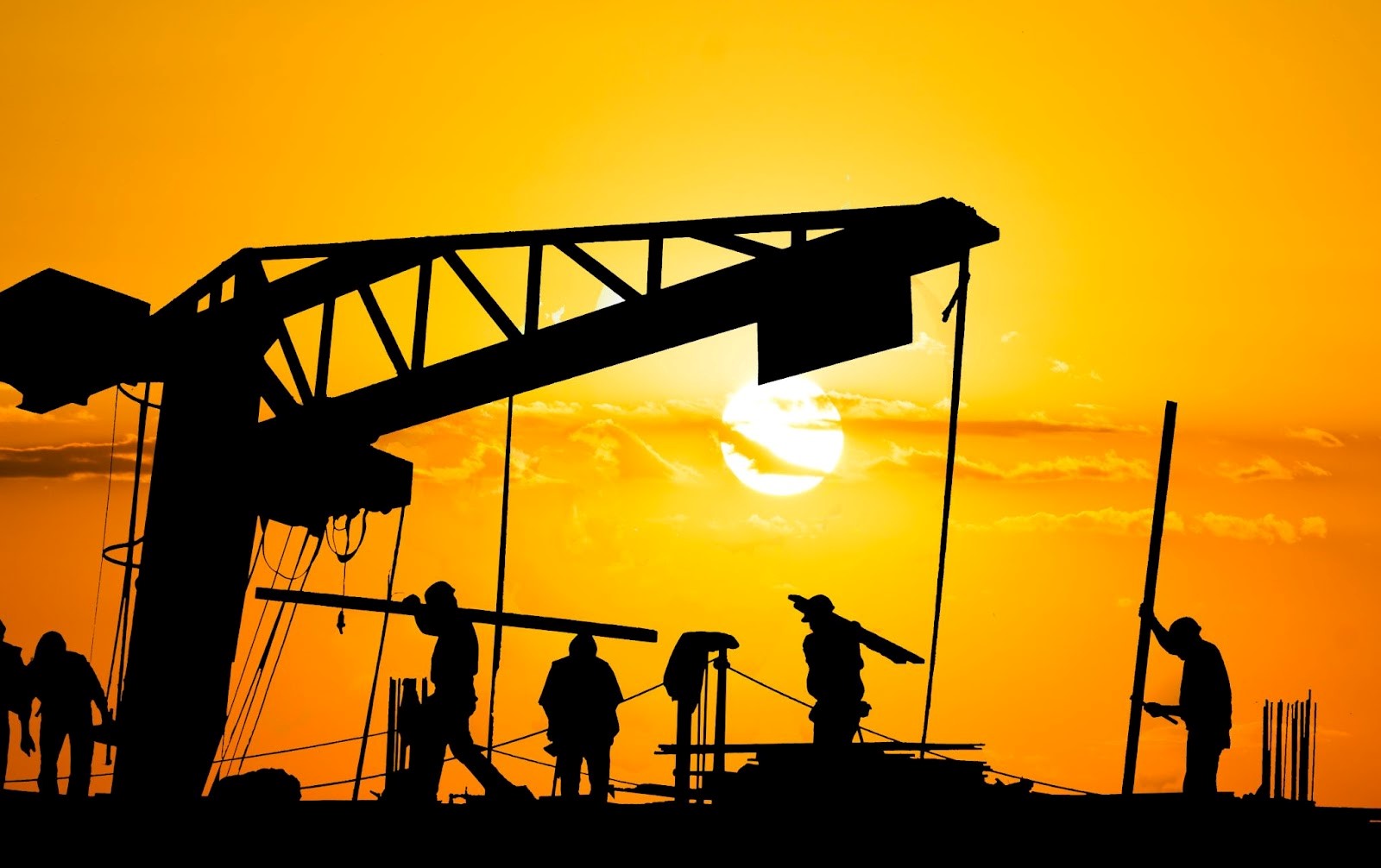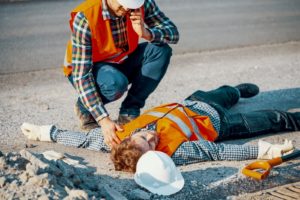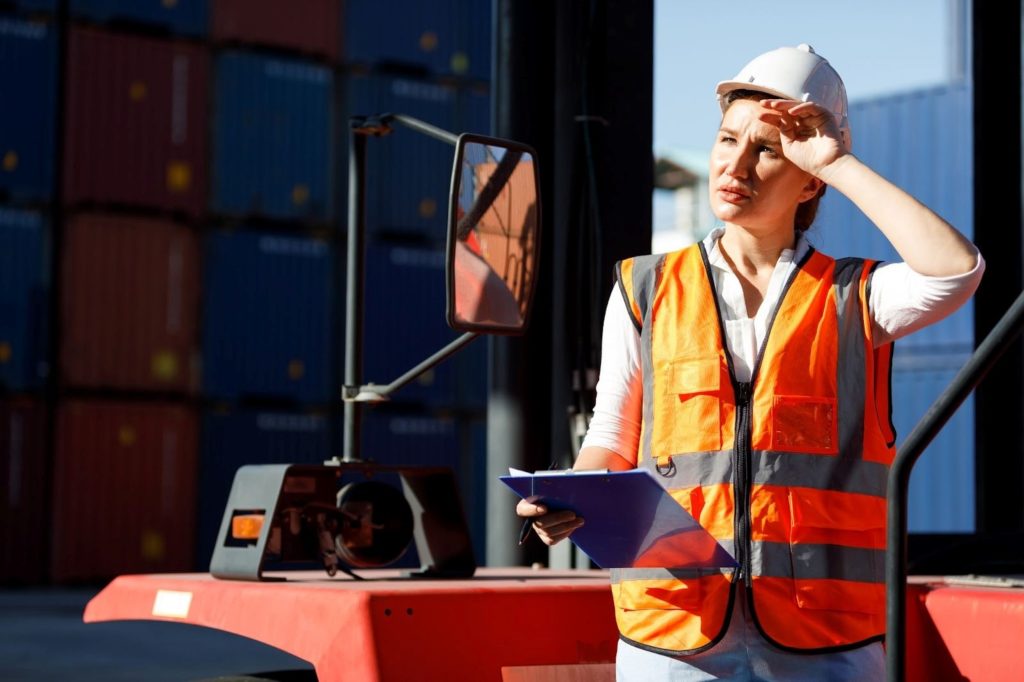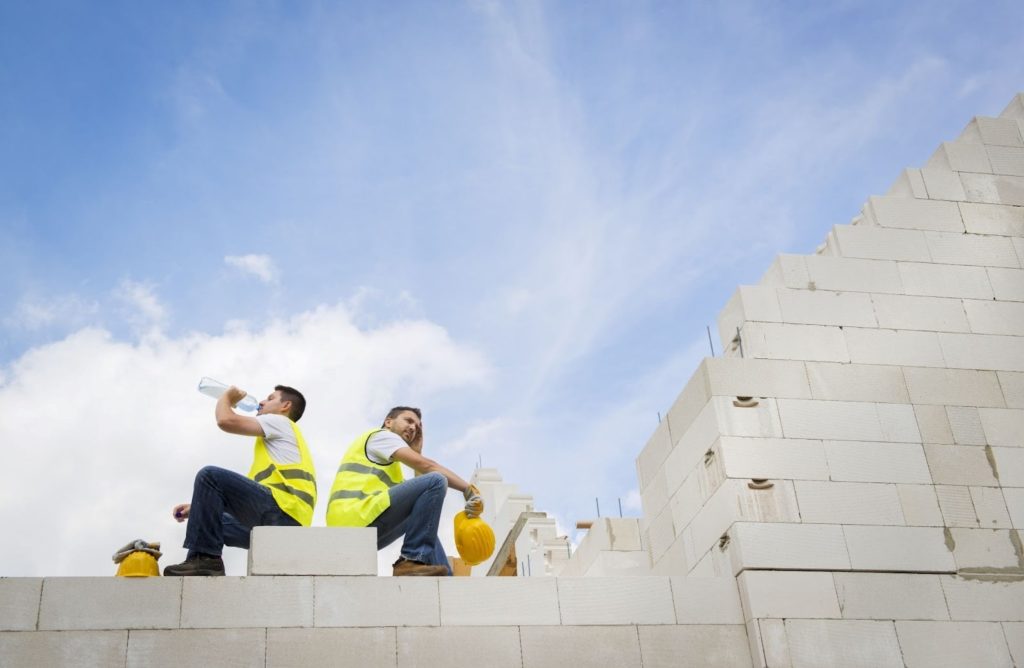Construction Heat Safety
- September 29, 2022
- By Gerard Devita


For construction workers, the intense summer heat can be a safety hazard. Overheating and fainting are already dangerous, but they are especially dangerous for workers operating dangerous machinery or tools.
There are ways to stay safe on construction sites in the heat to help minimize these risks. Continue reading to learn more about common heat-related illnesses and 5 construction heat safety tips to help prevent these illnesses on construction sites.
If you were injured while working on a construction site and need help collecting compensation, contact the experienced Long Island construction accident lawyers at Carner & DeVita to schedule your free consultation. You can call us at (631) 543-7070 or use our online confidential contact form.
Common Heat-Related Illnesses (HRIs) on Construction Sites
Because construction workers often work outside, they are exposed to high temperatures for long periods of time in the summer months. Working in high temperature environments poses a risk for heat-related illnesses such as the ones listed below.
If the body temperature exceeds 2 degrees higher than the baseline of 98.6 degrees, the body will begin to have issues functioning properly.
The body will try to cool itself, but heavy work gear and working in direct sunlight may make that difficult. If the body is unable to cool itself to an appropriate level, one of the following heat-related illnesses (HRIs) may occur.
Heat Stroke
 Heat stroke, the most dangerous HRI, occurs when the body is unable to control its temperature. The body temperature quickly increases and the body stops producing sweat, resulting in an inability to cool itself.
Heat stroke, the most dangerous HRI, occurs when the body is unable to control its temperature. The body temperature quickly increases and the body stops producing sweat, resulting in an inability to cool itself.
The body temperature may increase to 106 degrees or higher in a matter of minutes, leaving the person confused, delirious, slurring their speech, or even causing them to have a seizure or fall into a coma.
A person suffering from heat stroke might lose or be in-and-out of consciousness and might have hot, red, dry or moist skin. Heat stroke is a medical emergency and a person experiencing this must seek medical attention immediately. Some heat strokes can be fatal, and some victims might have organ damage from the body temporarily shutting down.
Heat Exhaustion
Heat exhaustion is less life-threatening than heat stroke, but is still very serious. When the body overheats, heat exhaustion will manifest with signs of profuse sweating, a weak but fast pulse, general weakness, and may cause dizziness, fatigue, nausea, headache, and cold and clammy skin.
A key visible difference between heat stroke and heat exhaustion is that a person suffering from heat exhaustion will be sweating a lot, while a person suffering from heatstroke is unlikely to be sweating or might be sweating very little.
A person experiencing heat exhaustion, if not given the chance to cool down and rest, might suffer a heat stroke.
Fainting
Fainting is one of the most common HRIs for people who work outside that may become overheated. When you are out in the sun, your blood will rush to your legs and underneath your skin.
However, if not enough blood flow travels to the brain, then you are at risk of fainting. A quick drop in blood pressure can cause someone to faint, which could result in other injuries from hitting something when falling.
Watch out for feelings of lightheadedness as this may be a warning sign. If someone faints from overheating, give them small sips of cool water or a drink with electrolytes, fan them, and have them lay down in an air-conditioned or shaded area.
Heat Cramps

Heat cramps are muscle cramps and spasms that occur in the legs or abdomen as a result of overheating. These cramps may be a warning sign of heat exhaustion, so they should not to be ignored or taken lightly.
Heat cramps are common after hard work in high-heat environments. If you experience heat cramps, don’t simply work through them. You need to take a break, sit in a cool area, and drink cold fluid.
To avoid the development of more serious HRIs, you shouldn’t return to work for at least several hours after experiencing heat cramps.
Heat Rash
Heat rash is when the skin reacts to profuse sweating when an overheating body is trying to cool itself down. This will cause a reddish skin rash that will appear as a group of blisters or bumps.
If someone is experiencing heat rash, they should be moved to a cool dry place where their sweat can dry. Unscented talcum powder may help make the rash less uncomfortable.
It’s important to keep the heat rash area dry and avoid using creams or ointments that will keep the skin wet and warm as this could make the heat rash worse.
| Issues develop when body temperature exceeds by two or more degrees a baseline of 98.6. |
5 Ways to Prevent Heat-Related Injuries on Construction Sites
Now that you know about some common HRIs and their warning signs, let’s discuss how you can prevent these injuries from occurring on construction sites with these simple construction heat safety tips.
1. Drink plenty of clear fluids, preferably with reduced or no sugar

Staying hydrated is extremely important. Drinking cool water or other low- or no-sugar clear fluids will help your body regulate its temperature. Don’t wait until you are showing signs of an HRI to drink water on the worksite – make sure you are staying hydrated all day.
Hydration will help your body cool down, function better, and fight off overheating. Water is best, but it can also be helpful if you have some low- or no-sugar sports drinks on hand to help replenish your electrolytes on a break.
2. Wear sunscreen and protective gear
Don’t forget to wear the proper protective sun gear such as polarized sunglasses, high SPF sunscreen, hats to shade your face and neck, and protective clothing. Protective gear can help you resist overheating by blocking some of the harsh UV rays that are harmful to your body.
Proper sunglasses are also important because they protect your eyes from direct sunlight that can damage your vision. Sunscreen will protect your skin from sunburn which can vary in severity, but be sure to reapply it frequently for continued protection.
3. Keep yourself cool and work in the shade as much as possible
We know that not everyone has the luxury of determining where or how long they work in one spot uninterrupted, but your ultimate goal should be to keep yourself cool. If you can work in the shade or a cool area, that’s great, but if not, take breaks to cool down as frequently as possible and as needed.
4. Monitor your heart rate
Keep track of your heart rate. If your pulse starts to get faster or weaker, that may be a sign of trouble. If your heart rate is abnormal, it’s time to stop and rest in a cool spot. Your body will thank you for the break.
5. Look out for coworkers
Look out for your coworkers. If you see a coworker acting strange or looking distressed, check on them to make sure they’re okay. If you can, share some water or sports drink with them, or (if possible and if it can be done safely) switch positions with them if they are in more direct sunlight and you are in the shade.
Be on the lookout for the warning signs of HRIs that we discussed so that you can give your coworkers the help they need if you see any warning signs.
Injured on a construction site? Carner & DeVita Can Help.
If you suffered a heat-related illness or other injury on a construction site, Carner & DeVita can help. We represent injured workers and offer free case consultations. Call (631) 543-7070 to schedule your consultation with a Long Island construction accident attorney.
Have question?
Contact us today!
